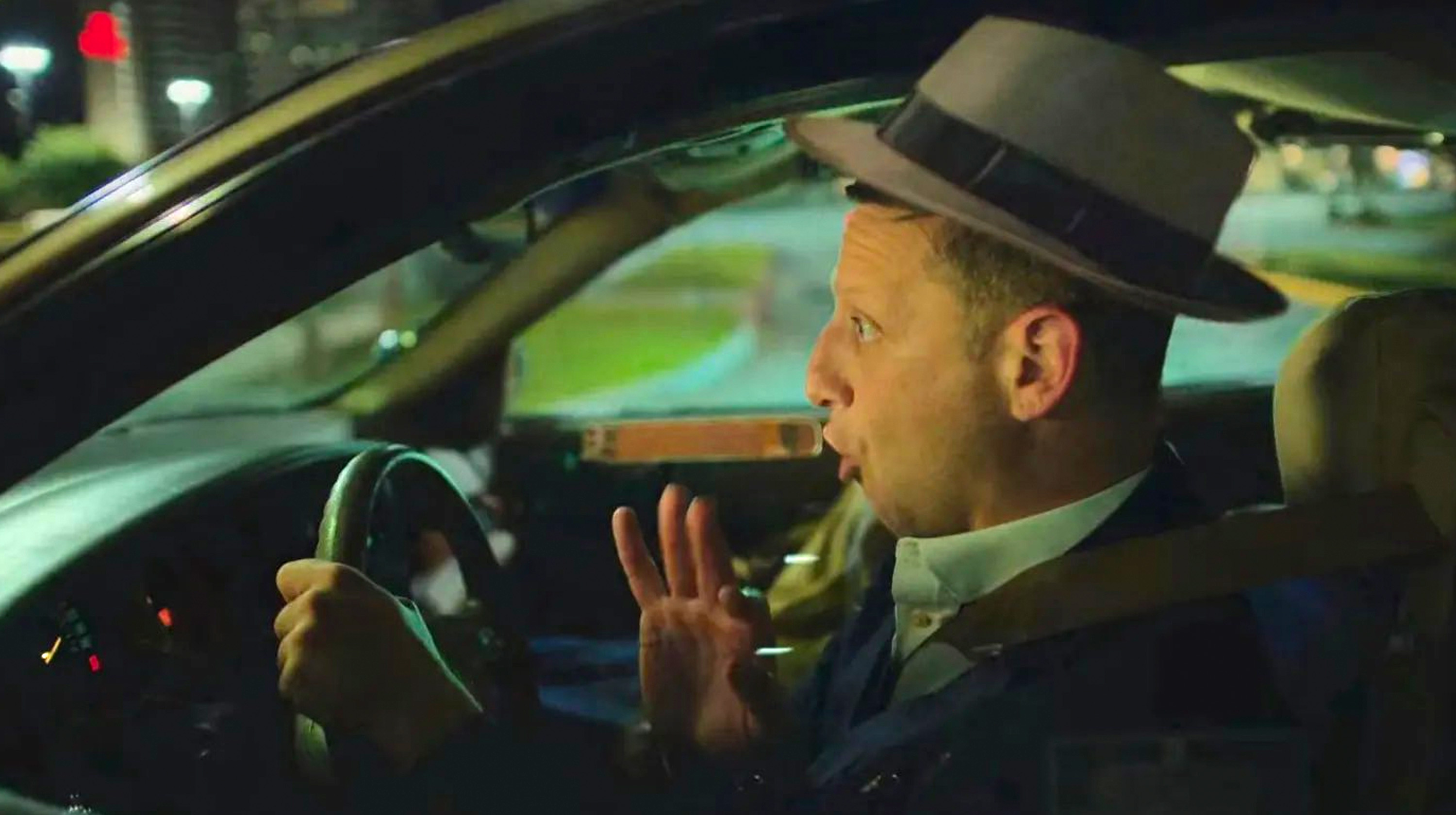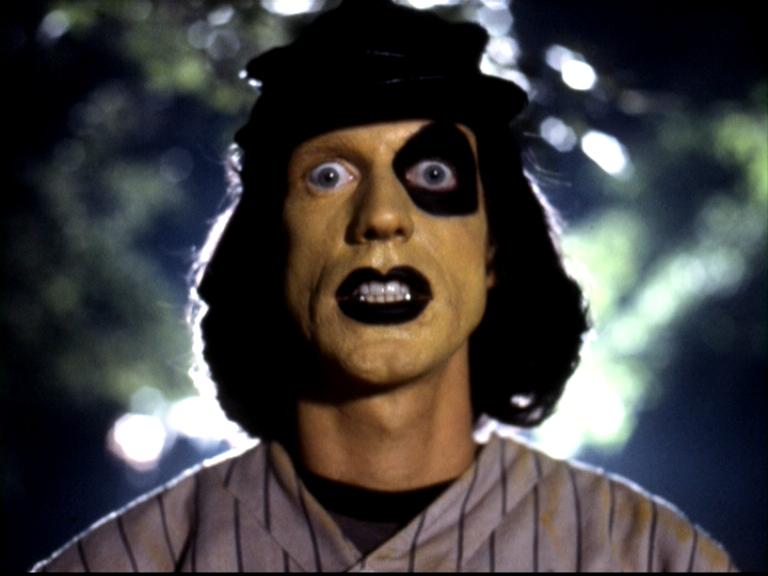3d movies are twice as long as that!
It’s a bit off an off-topic but, can someone explain me the difference between IMAX and iSense? I’ve googled it but don’t fully understand it. How does iSense compare to this beast of an IMAX film reel for example? What about more standard IMAX theatres?
Thanks!
Going to see Oppenheimer in imax soon and this post got me researching about imax and fake imax and now im a little disappointed that the imwx theater im going to is just digital imax (fake imax). Oh well :/
I was also disappointed when I checked how many true IMAX theaters the movie is playing in in the US. We have a real IMAX theater in our natural history museum in my city, but Oppenheimer won’t be playing there :(
There’s one full imax in CT being demolished for a bridge. It is a very necessary bridge that’s 125 years old and supports the commuter rail into NYC. I doubt the IMAX will be replaced.
Damn that’s the one that’s halfway between my brother and I. I was hoping to make it a regular spot.
Wow that sucks…
Holy shit balls.
16k, it’s iMAX, which is about as good as it gets.
All of this could fit on a micro SD card.
Yeah, nah. The equivalent digital copy would be terabytes, and the read speed of a micro SD likely wouldn’t be fast enough.
Probably not. 3 hours of uncompressed 1080p video is around 2tb. The film is closer to 16k which is 64 times more pixels than 1080p. This ain’t your web rip off pirate bay.
Still works if you replace the SD card with an SSD, only slightly larger in comparison to the reel. Of course this ignores any losses when you digitise the film.
Surely even a lossless compression is incredibly smaller. (But you can’t truly losslessly convert from film to digital, only commenting on uncompressed 1080p.)
However, let’s not forget the whole thing was created digitally then “printed” to film, so there was never a “film original”.
Well, kind of. Nolan does shoot on film, including all of Oppenheimer, but they almost definitely brought it into some digital format for editing before pressing it back onto film in this case.
He uses the camera negative as much as possible and avoids CGI as much as possible so a lot of film hasn’t been digitised and reprinted it’s from the actual source.
Fair point, I hadn’t looked up the specific movie / director
Christopher Nolan is famously one of the few big Hollywood directors who still shoots much of his footage on actual film, specifically in IMAX.
It’s hard to say, but film grain is noisy and noise does not compress well. In my experiments with lossless video compression without film grain you’d get a ~3:1 compression ratio. With film I’d guess closer to 2:1.
So 16k (15360 x 11520) x 12 bit per channel (36) x 24 fps x 3 hours (10800) is 206 TiB. Even with very generous estimates of compression ratios you’re not fitting this on anything less than a 2U server filled with storage.
Sure but that’s not the point, film is wholly uncompressed. When theaters get 4k digital releases they get mailed a hard drive with the movie on it. “This” wouldn’t fit on any card.
Not quite, as the other dude said. IMAX is on a whole other level, which is probably why there are so few of them around.
Needs a 600 lbs SD card.
I’m so stoked for this. Just got done listening through The Last Podcast on the Left’s series on the Manhattan project too
Are they an actual leftist podcast? Not tankies in disguise?
Also looking into it, it’s a true crime podcast? Seems an odd name choice if it isn’t somewhat related to politics. Unless I’ve 100% misunderstood the naming convention.
Might wanna get off the computer every now and then.
How is this any kind of rebuttal? Pathetic.
It’s a reference to the movie “The last house on the left.” Not sure about their politics but it’s like a horror/paranormal podcast.
Not related to politics, they’re horror fans - name is a reference to ‘Last House on the Left’. They cover anything that’s macabre, be it real or fake, so true crime, serial killers, paranormal events, cults, conspiracy theories, cryptids; that sort of thing.
Wtf is a tankies
As much as I’ve been able to gather from the .ml Lemmy instances where these people live, extreme communists who defend Chinese and Russian propaganda and deny any atrocities they’ve committed while railing on America to defend their stance.
A Red Fascist. An authoritarian in the guise of a communist. They support USSR and CCP.
Woof
All the sloughing.
Oh we’ll get to the sloughing!
(Not nearly as much sloughing as I expected though, tbh. They talked it up way more than actually talking about it, which is fine)
Fellow Lemmy LPOTL fans rise from your grave!
This reminds me of one of those documentaries where they show some ridiculous mechanical contraption in a scene, and the narrator says, “Before the technology became extinct, it had become vastly more complex and sophisticated, but alas, it’s days were numbered…”
I wish there was a full size imax theater near me, but there isn’t even one in my state. Going to see Oppenheimer in the biggest screen I can, but it not being imax is gonna be rough
I’m sure I’m wrong, but it’s hard to imagine this being better quality than what we can do digitally these days.
Resolution and color reproduction is still unmatched. Plus there are a lot of things happening in the analog domain that our eyes notice as beautiful.
Same thing is true for analog vs digital music production btw
Yeah, but they’re likely digitally editing it all now, so it loses that in the middle of the process. Can’t really see why it would make sense to print a digital file back onto film
Despite being what a lot of analog fetishists focus on, a purely analog editing chain is not necessarily what causes the effects that they actually like about analog media. Most of it comes from the playback media itself. In the case of vinyl records, there’s mastering techniques that have to be used to make sure the needle stays in the groove that some people feel sound better. There’s minute harmonic distortions that people prefer over the perfectly clear and clean sound of digital. In the case of film payback, you have actual image frames being flashed on the screen. You have shutter dwell where no image is shown at all while the next frame is being advanced. You’d never consciously notice the flicker, but it affects the way you perceive the image and the motion on the screen. Film can have very high contrast and there may also be minor differences in color profile due to being displayed by pigments rather than being created digitally. Most digital media these days is technically far superior to it’s analog counterpart. It just happens that it’s the limitations and artifacts of the analog media that some people find pleasing.
Yeah, I like vinyl too. But digital to analog conversion is always imperfect. I don’t see that being too fitting for an IMAX cinema, where the aim is just biggest and best, no niche. Aesthetic imperfections are more fitting for arthouse and such I think.
However, I read into it some more now and it’s quite interesting. In the case of Oppenheimer, they actually do manage to avoid the digital conversion for much of the film!
For movies shot on film, all of the film negatives are scanned to digital files so that they can be edited using AVID, and the process continues as before. The finished movie can then be “printed” back on to physical film using a laser scanner, which is how most film prints are made these days. However, some filmmakers like Christopher Nolan refuse to use this method, because it doesn’t allow you to take full advantage of the resolution of IMAX film. So in Nolan’s case, once the movie is finished, an Edit Decision List (EDL) is created, which contains a text list of all the edit points in the film, and which physical pieces of film negative those correspond to. Then, a person called a Negative Cutter actually physically cuts together and assembles the film negative to create the movie in the analog realm. It’s a very specialized profession - there are only one or two people in Hollywood that still do it!
That’s pretty cool. Of course Christopher Nolan would insist on editing on film. I bet Tarantino and a few others would as well. In the case of laser printing vs optical printing, he’s probably right, especially at IMAX scale. And you’re absolutely right that he’s choosing it because it’s the highest possible fidelity, whereas someone like Tarantino chooses film for sentimental, kitsch, and artistic reasons. Apparently digital IMAX is still only about 4k at best. In the audio world though, analog DACs really are perfect reproduction many times beyond what is perceptible in sound. Compared to cutting to vinyl from tape, or even transferring from tape to tape, digital is orders of magnitude higher fidelity to the source signal. There’s lots of reasons to love analog audio, but higher measurable fidelity is not among them.
I can’t speak for video, but for audio production that isn’t true. Audio signals can be perfectly reproduced, up to some frequency determined by the sample rate and up to some noise floor determined by the bit depth, digitally. Set that frequency well beyond that of human hearings and set that noise floor beyond what tape can do or what other factors determine, and you get perfect reproduction.
See here. https://youtu.be/UqiBJbREUgU
I don’t know if perfect reproduction necessarily sounds better. It’s probably subjective, but projects I’ve worked on that were tracked with tape have a quality that you can’t get from digital. I’m not talking about tape hiss or anything like that. There’s a roundness to the sound.
True! Analog can distort the audio in a way some people like.
But, it is a distortion. It’s not there in the original audio. Sometimes, that is desired though.
deleted by creator
Valves and vinyl still sound better
Some people do like the distortion that analog audio provides, that’s true. But it is because of something that wasn’t in the original audio. It’s an artistic choice.
To store digitally you would need a compression algorithm. Pretty much all video compression algorithms are lossy, which means you automatically lose detail.
Storing an uncompressed video isn’t feasible as each frame could be hundreds of megabytes (or more) in size. This is due to resolution + color info + audio channels.
Many lossless video compression algorithms exist.
https://en.m.wikipedia.org/wiki/List_of_codecs#Lossless_video_compression
Even uncompressed, they would be large, but not unfeasible. Even assuming about 12 MB per frame (reasonable for lossless 4k) that gives us about 1TB per hour. Using lossless video compression would push that smaller. That’s very large for consumers, but not for a film studio. I’m certain a few terrabytes Iof storage are way cheaper than that much film.
4K isn’t nearly enough resolution to compare to IMAX. Plus, I assume your calculations are for 8bit color. To hang with film. Would need to be 12bit
The color was in fact 16 bit.
If you want 18k, multiple 1TB by (18/4)^2 ish
So more like 20TBs. And again, that’s lossleslly compressing the individual images, but not the video. The video is still uncompressed. Lossless video compression would significantly reduce that.
It is a huge file, but it’s just as tractable as that film.
An uncompressed 4K frame with 16-bit color is about 50 MB. An uncompressed 18K frame with 16-bit color is just over 1 GB.
I don’t disagree with you that lossless 18K video storage is trivially easy—digital storage is shockingly cheap these days—but I’m curious where you’re getting those numbers from. Compressing an hour of 18K video from 87 TB to 20 TB seems like a remarkable feat.
I was using lossless compressed image sizes becuase they were relatively easy to find. So those 4K 16-bit frames were more like 12 MB instead of 50. That’s where the compression comes from. Lossless image compression details were much easier to find than losses video compression details, and I could test them myself easily. The 12 MB will depend on the original image, as some compress much more readily than others, but it’s reasonable.
Idk. One benefit is that if preserved, in the future it might allow digital captures of higher resolution. I say might because maybe we already reached the max level of detail you could extract from these type of analog films I do not know.
Depends on the film itself being used. You can get a pretty insane level of detail on the professional-grade stuff. It’s how we’re able to do 4K remasters of stuff from decades ago. Digital still has a fair bit to go before it can fully outshine analogue film.
We have such a thing as an 8K camera. It’s kinda hard to beat an 8K camera. Especially given film has a very low frame rate, so you’re trading one kind of quality for another.
8K is basically more pixels than your ever going to need unless you like staring at a tiny portion of the screen. 24 FPS (films normal FPS fyi) on the other hand is very noticeably different from 60 FPS, nevermind the 120+ FPS some cameras can do.
The reason we have these cameras is partly so we can crop and still get a usable 4K or 6K image.
As for compression we have true lossless and visually lossless formats that are used on professional video cameras. This includes Red Raw.
Did I mention that this kit is cheap enough that Linus Tech Tips - a YouTube channel - can afford to have at least one.
IMAX 1570 film is equivalent to somewhere between 12K and 18K resolution, though as you say that’s only going to matter on a really big display or if you’re creating content for future VR headsets. As for frame rate, more than 24 FPS doesn’t really seem popular in cinema - I remember that Hobbit film getting quite a negative reaction when it tried 48 FPS, and then there’s the Soap Opera Effect. The colour characteristics of different kinds of film also appeal to some artistic filmmakers.
None of those points really justify the significantly more expensive and complicated workflow that comes with analogue film, mind. I do wish digital hadn’t taken over so soon because a whole bunch of media is now stuck with 480p digital as the best it’s realistically ever going to look barring AI upscaling, but I can’t say I really blame the producers for making that decision because digital is far less of a pain in the ass.
Nope not even display size can save this, as you need to sit some distance to see the whole thing, unless you only want to look at a portion. The human eye has a finite effective resolution.
VR it could maybe make a difference, even then 8K is good compared to most modern VR devices.
VR possibly needs to get as high as 16K to be truly perfect for the human eye, so it could be useful there. But 16K headsets are a long way off, and refresh rate also needs to improve since the human eye can perceive up to 2,000 frames per second, so I feel like refresh rate will be the priority over pixel density by the time we get even 8K headsets.
While some of what you said is questionable, I do wish more movies were shot in 60+ FPS. Some people clams to prefer 24 FPS, but I honestly think that’s just because we’re so used to it.
What have I said is actually questionable? 8K is already beyond the limit of what a human can see at any practical viewing distance. Super high end film might beat it in equivalent resolution, but at that point it’s purely academic because you’re eyes can’t see that much detail.
Unless you want to blow up a small portion of the image to poster size… then I am sure IMAX film is better. Just not sure why you would want that.
Meanwhile in framerate you can see a fairly large difference between the two technologies.
deleted by creator
Film is still higher quality than TVs these days. There’s a reason it’s easy to remaster and rereleasr classic content shot on film than more recent content shot digitally.
You are in fact wrong lol. Actual film has a resolution equivalent of something like 18K.
I don’t think there’s any reason we couldn’t make a store 18k video.
And we could make screen at much higher resolutions that that at imax size, or even quite a bit smaller, though I suspect it would be absurdly expensive.
It is technically possible but you’re right it would be absurdly expensive.
Storing it isn’t the problem, you’ll still need to be able to record and project at that resolution.
As I said I’m sure we could make screens that could do that. They would be absurdly expensive and heavy and stupid, but it could be done. Not worth it though.
And it looks like at least 16k cameras have been made.
The screens aren’t the problem. It’s often the hardware driving it. The current top generation of gaming gpus struggles at 8k. There’s very little chance of being able to render and play 16/18k
Rendering video and rendering games are pretty different. Video is generally easier especially once it’s mixed down.
Wasn’t normal 35mm film about the equivalent of somewhere between 4k and 8k depending on the film stock?
Plus, the projector optics will always limit the sharpness of the picture. No lense is ideal, and even ideal lenses would have fundamental limitations due to diffraction.
Something like that.
As far as lens optics, we’re really splitting hairs here. 70mm through a quality lens in an imax theater is going to look absolutely fantastic and stunning. Digital is just more convenient and at some point it will catch up and surpass film.
My point was more like that even IMAX film doesn’t quite get to 18k equivalent, more like 12 to 16k. Honestly, anything above 4k (for normal widescreen content) even on big screens is barely noticeable if noticeable at all. THX recommends that the screen should cover 40° of your FOV; IMAX is what, 70°, so 8k for it is already good enough. Extra resolution is not useful if human eye can’t tell the difference; it just gets to the meaningless bragging rights territory like 192 kHz audio and DAC-s with 140 dB+ S/N ratio. Contrast, black levels, shadow details, color accuracy are IMO more important than raw resolution at which modern 8k cameras are good enough and 16k digital cameras will be more than plenty.
The extra resolution isn’t completely useless from an editing standpoint.
If you’re working with 16k footage and a 4K deliverable and the shot isn’t quite right you can crop up to 75% of the image with no loss in quality.
This kind of thing would be mostly useful for documentaries, especially nature, or sports where you can’t control the action.
Yup that’s why people can go back and rescan old film movies to make them into 4k now that we have better cameras, but you can’t do that with movies that were recorded with digital
Yeah, we’ll have this brief digital gap from the era when film was going out of fashion and 4k and higher resolution digital cameras weren’t a thing yet. But now that even average youtubers are shooting 4k with cheap(ish) DSRL-s, we generally don’t have to worry about the content having “not good enough quality for the future”.
The bigger problem IMO is the ephemeral and profit-driven nature of modern content distribution. Once the studio decides a film/series is not making enough money and pulls it from streaming, it’s gone. IIRC, DRM of DCP is also remotely managed so even if a cinema physically has the drive with the movie, they can’t play it when the studio pulls the plug–this was not the case with film.
Yeah all that is a huge problem, I remember Microsoft pulled the game Scott pilgrim from the Xbox 360 so if you didn’t buy it beforehand you couldn’t get it anymore until they did some legal stuff to get the game back in the store.
I still think film today is a great tool for getting high resolution photography at a cheap entry cost, a full sized digital sensor camera can be pretty pricey where as a 35mm film camera can be had pretty easy, then once you go to medium format it’s gets more expensive and then I’m not even sure there is large format digital cameras
Speaking of projectors, don’t they max at something like 100 nits?
The JVC DLA-NX5 I have the pleasure to have set up for demos at work is 1800 lm, or 525 nits. Plenty bright, HDR looks amazing on it.
Not enough to justify using such a proprietary technology
deleted by creator
proprietary technology
Not like the off the shelf stuff you can get to store and show 18K.
This obsession with the length and weight of the film is such a bizarre marketing strategy.
Big and heavy means quality, don’t you know?
The weight is sign of reliability. I always go for reliability.
Heavy is good, heavy is reliable. If it doesn’t work you can always hit them with it.
- Borris the bullet dodger
I think it’s more about the sheer amount of visual information that’s captured on film that size, but okay.
They must have done what some manufacturers do where they add a hunk of iron that has no purpose other than to make their products feel heftier lol
Never believe anyone who says size doesn’t matter.
Ya this feels really astroturfy. Are they bragging that the movie is really long?
I wouldn’t call it astroturfy but its so weird to me. Like nobody is walking around being like “The new PS5 weighs 7.5 pounds and has 139 miles of copper in its motherboard!” repeatedly for weeks. (I made up the amount of copper, but the weight is correct.)
Wow only 7.5 pounds, I have to get one now.
I feel like you don’t know what astroturfing is. This is just straight up promotional marketing for a movie coming out next week.
Movies are getting really long and I don’t know if I like it. I watched Across the Spider-verse recently which was I think 2.5 hours. To be fair it was a fantastic 2.5 hours, but every other movie in the theater was 2 hours plus and one was over 200 minutes long. Half of them were animated, which are usually on the short side and for good reason, because there’s never any real meat to the story (Spider-verse again being the exception). Sometimes you just want a relaxed 1 hour 20 minute story; not every film has to be this gigantic grand experience.
If this movie was 120 minutes or less I’d see it. I cannot imagine there being 3 hours worth of stuff that I need to know about that guy… not happening!
Do you know “The Ten Commandments” or “Ben Hur”? Or perhaps such monumental comedy productions as “The Hallelujah Trail”? It’s always been a thing
I’ll add The Godfather, Casino, Braveheart and Lord of The Rings to fill in some of the gap between then and now
Ikr l, watched spider verse a few days ago, awesome movie but I just was like, get this over with I’m falling asleep
It’s something you don’t see every day. What are you asking for?
It’s interesting, calm down.
I think you meant to reply to the guy above me.
Yeah, we all know girth is what matters.
If I pay to see a movie in an IMAX theater, this is the film being loaded? Is this normal for IMAX?
Check out this list. The imax 70mm ones would be reels like this one.
https://www.in70mm.com/news/2023/oppenheimer_cinema/index.htm
No. This is called “15/70 Imax”. There are very very few theaters that have this. The “Imax” you’ll find at the local mall is totally different.
I think the theater near Lincoln Center in NYC has this format. I saw 300 there, and something else but I can’t remember what. It looks absolutely insane.
Insane good or insane bad?
Ha, sorry. I thought it was awesome.
Was 300 actually filmed in IMAX?
Don’t they send them on encrypted hard drives these days
It would be more inconvenient shipping that hunk of a thing compared to a hard drive
Then again it makes it easy for the movie to be leaked early by someone since it’s not encrypted
Directors that film on Imax generally still have a hard on for physical film.
Not that I blame them. I ran movie theaters for 20 years and while I really did appreciate how much easier my job was after we went digital, I legitimately missed working projection booth shifts when it was all film. Threading and starting two dozen projectors all day long and building prints, it was some of the most fun I ever had at a job. It was really zen, just you and the machines.
What does “building prints” mean?
You should do an AMA!
Back in a day, movies were projected by chunks. By mean chunks, film reels, either 8mm, 16mm, or 35mm. Some reels have limited celluloid capacity to handle, so multiple reels shipped to theaters. The projectionist taking care of it, assembling the celluloid and project it using bulb.
Fun thing of this, cinemas back then “accidentally” projected those X mark from celluloid.
Back in the days of 35mm film, movies were delivered to theaters in individual reels. A typical movie would be five to seven reels long.
It was my Thursday job to tape all the reels together into one long piece of film for the Friday premier. I’d also have to build the trailer packs, add cues for lights down/up… just generally make sure that the movie would work as it’s supposed to.
For reference, you see that platter of film in the OP picture? That platter was delivered in chunks, and building the print is putting all those chunks together to make a complete movie.
I’d absolutely do an AMA if there were a mechanism to do so.
I don’t think leaking physical film (in a high quality manner) is easy.
All it takes is one cinema owner that secretly leaks movies to do it
Guessing this will beat Interstellar record for longest IMAX film. Interstellar has the record being 2 hours and 47 minutes. But looks like Oppenheimer is 3 hours long.
Pretty unnecessary in this digital age
Well you could argue making movies is unnecessary altogether. This is art and this is the medium used by the artist.
It’s not about image quality of film vs digital, it’s about the feel and texture of the experience as a whole.
Just knowing there is an actual film being rolled and having light shun through it while watching it is part of that experience.
If you can’t tell the difference on the screen it should make no damn odds how the image was stored.
And who says there’s no difference on screen?
Shun?
Lol I guess I meant shone. Anyways, with light shining through
I disagree. Have you ever been to a real 70mm IMAX screening? I don’t mean your typical “IMAX”. There’s only a handful in the whole world.
The quality is gorgeous, and the screens are huge. You also get significantly more of the frame than you will in traditional cinema and on bluray releases.
Don’t call it unnecessary until you’ve actually seen it. Digital IMAX isn’t close yet.
The reason it’s unnecessary is that digital can completely capture a 70mm in high enough resolution that you perceive no difference at all. 8 or 16K projection is completely feasible in commercial projection systems. It means the cinema only has to deal with a small box instead of an enormous roll of film.
That doesn’t mean either digital IMAX since that’s old tech using something like 2K projection which isn’t adequate.



























